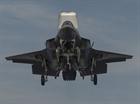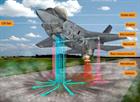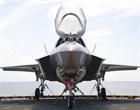F-35B update June
An engine oil problem struck an F-35B jump jet variant of the new aircraft being tested by the United States Marine Corps on June 10. The pilot declared an in-flight emergency and landed safely back at base at Marine Corps Air Station Yuma in Arizona, The Wall Street Journal reported.
A MoD spokeswoman said of the latest fault: “There is nothing unusual about this as the F-35B is still in its test and training phase.
"Routine flight trials were temporarily suspended overnight but have now resumed. These fifth generation stealth aircraft will be the most advanced jets in our inventory and will far outreach the capability that was held by the third generation Harriers."
Four F-35B jets arrived early evening on Friday 27 June at an air base in southern Maryland, where they will be readied for their first trans-Atlantic flights, according to sources familiar with the program. The jets came from a Marine Corps base in Yuma, Arizona. "We are continuing with our plans to deploy to the UK next month," said Marine Corps spokesman Captain Richard Ulsh. The F-35B will reportedly make its international debut on July 4 for the naming ceremony of the 65,000-ton Queen Elizabeth at the Rosyth dockyard, though the MoD has not confirmed this. It will also fly at the Fairford and Farnborough air shows next month.
Britain originally said it would take 138 of the planes, but the Defence Secretary, Philip Hammond now says a decision on how many to buy will not be made until after next year’s defence review.
F-35B What makes it fly?
Lift Fan
Whereas conventional jet fighters need up to 3,000 feet of runway to take off, the F-35B pilot simply pushes the throttle forward and is airborne in less than 500 feet. A computer controls the lift fan, which pushes cold air down, causing the jet to float up. The air also prevents hot exhaust from entering the lift fan and stalling the engine. As the F-35B approaches 288 mph, the wings produce enough lift to let the fan disengage.
Engine
Behind the jet's supersonic speed is the Pratt & Whitney F135 turbofan. During liftoff, the rear exhaust nozzle rotates to direct the engine's thrust downward, while a drive shaft in front of the engine turns the lift fan.
Roll Nozzles
On the underside of each wing, two computer-controlled roll nozzles channel a small amount of thrust from the engine to stabilize the airplane and keep it from rolling out of control.



